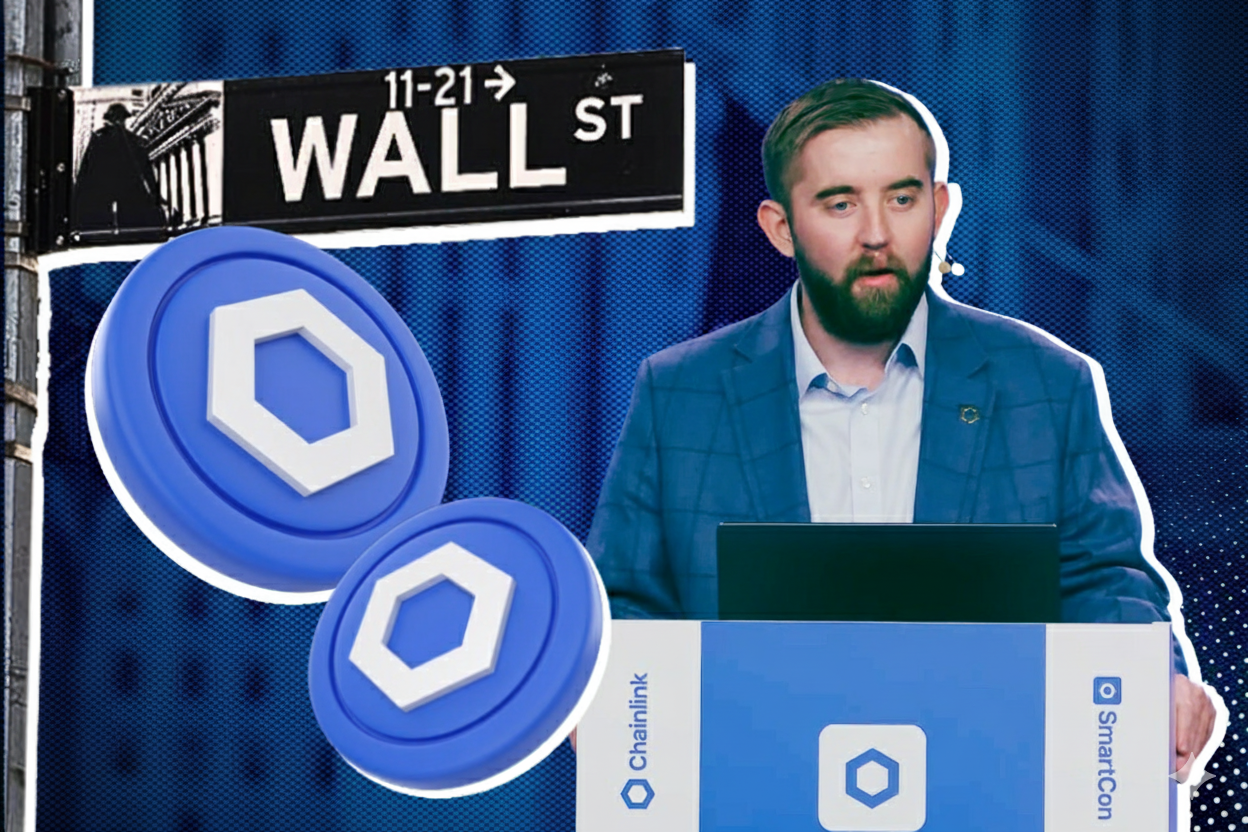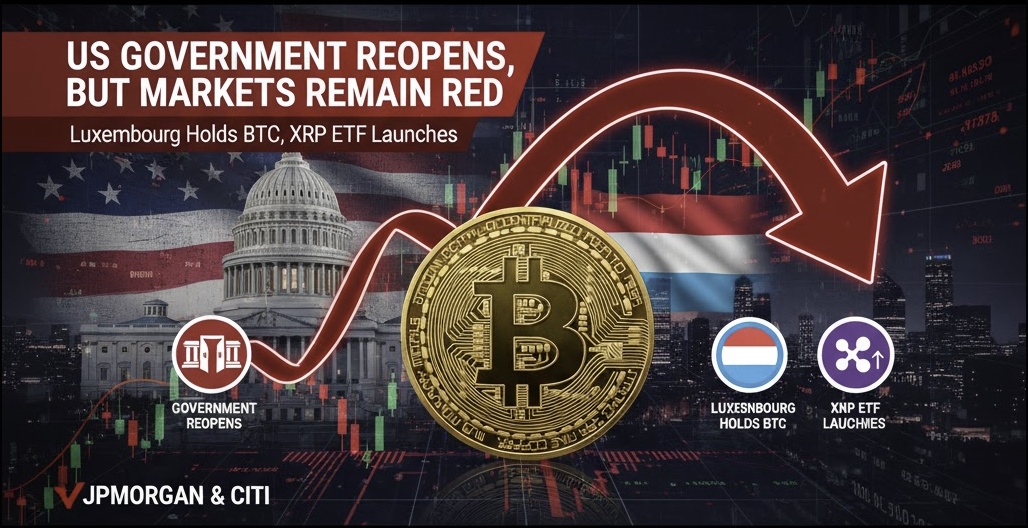Global financial markets have entered an optimistic phase as US stocks set new highs, Bitcoin surpassed $115,000, and capital continues to flow strongly into ETFs. A stable CPI report, coupled with signs of a weakening labor market, solidifies expectations that the Fed will soon begin a cycle of interest rate cuts.
Market and Macro Overview
US equities saw gains across all three indices on Thursday (September 11th, US), with the Dow Jones rising the most at 1.36% and the S&P 500 setting a new all-time high. Stock futures were largely flat. Oil contracts saw a slight decrease to $62.2 per barrel. Gold remained high at $3673 per ounce.
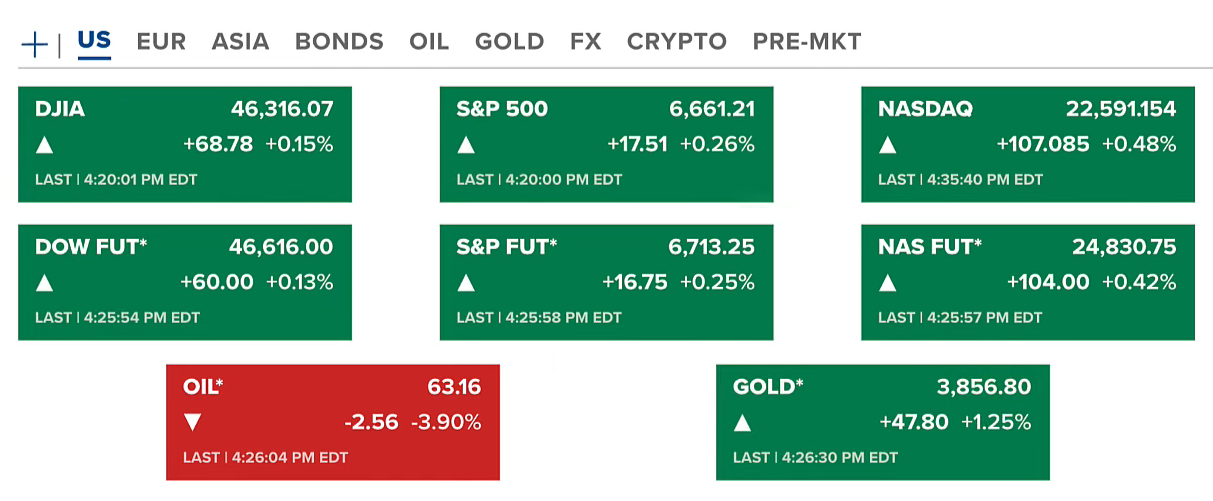
Bitcoin's price briefly surged to $115,000. Most altcoins saw gains. The overall crypto market capitalization increased to $4.1 trillion.
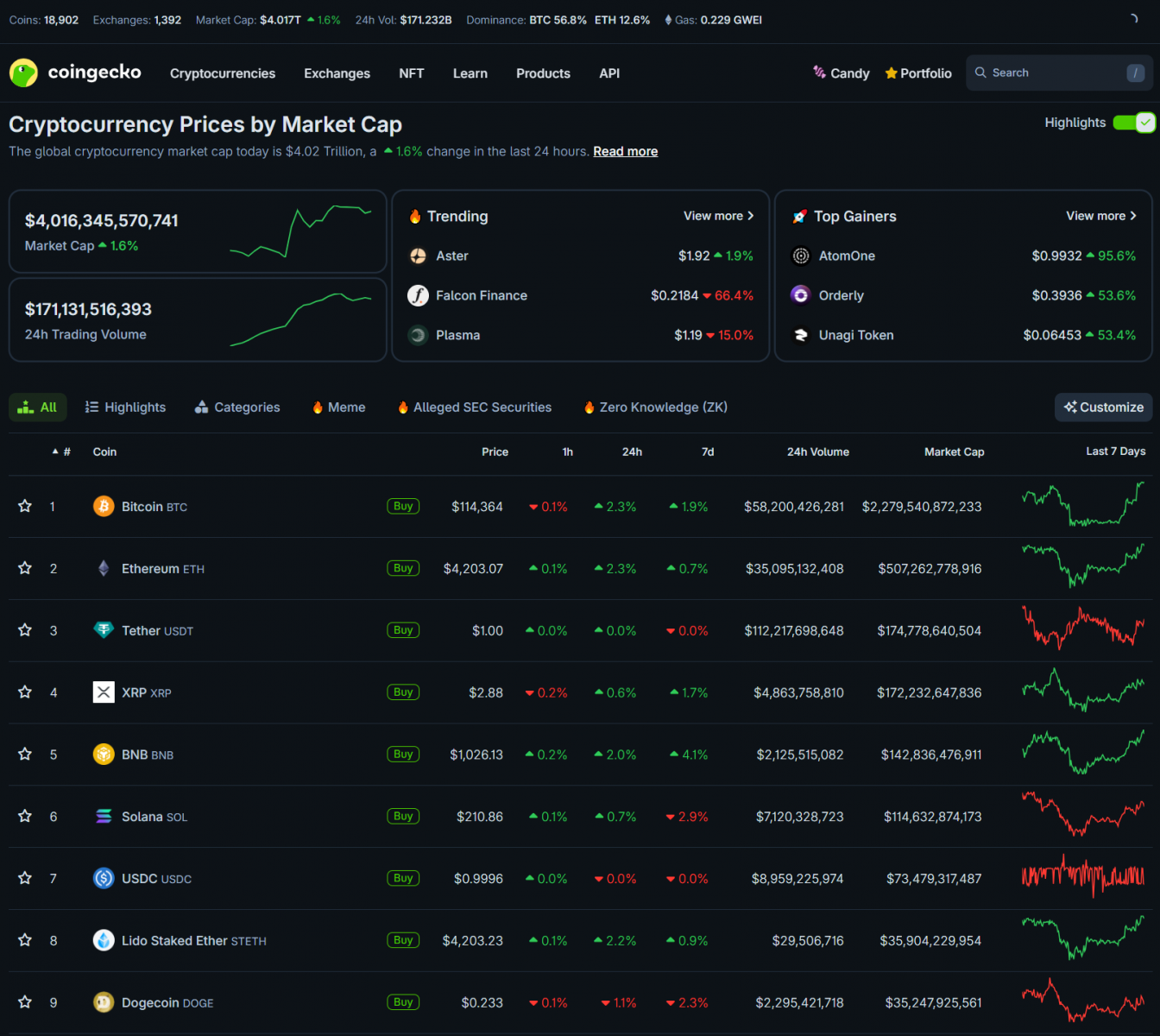
US BTC spot ETFs continued to see positive inflows, with a total of $552.7 million on Thursday. ETH spot ETFs also had significant inflows of $113.1 million. This robust capital inflow into crypto ETFs indicates sustained institutional demand.
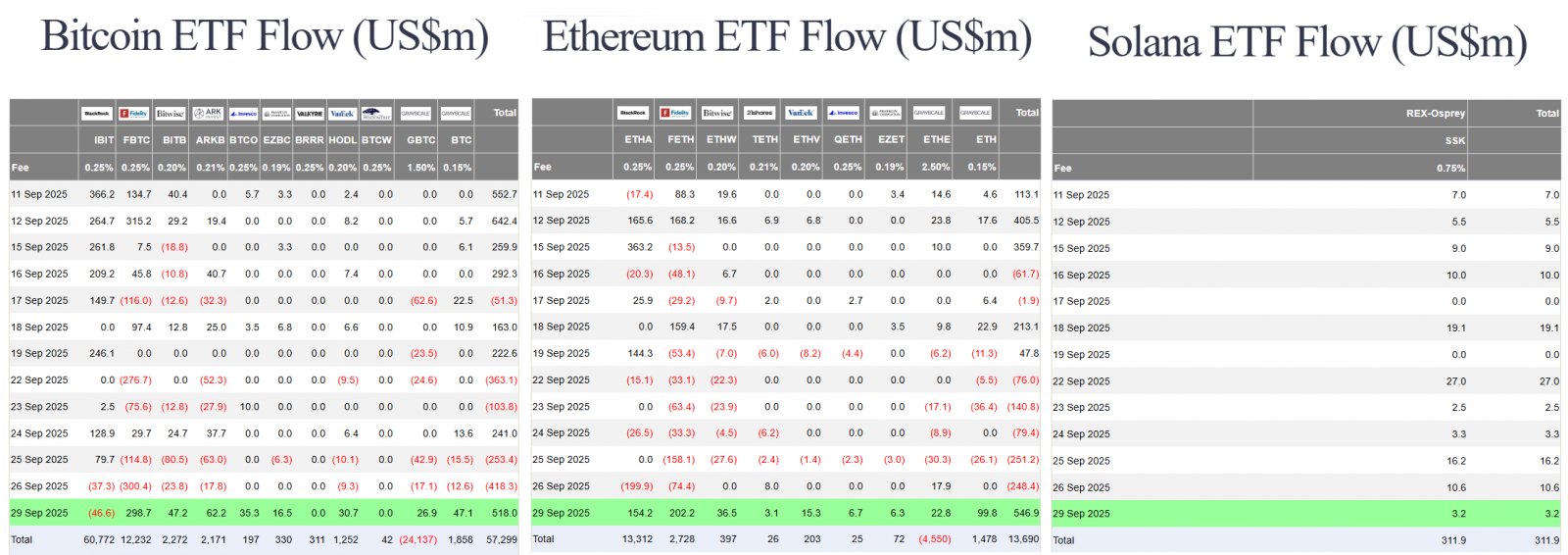
CPI Data Solidifies Fed Rate Cut Expectations
The US CPI for this month increased slightly to 2.9% from 2.7% previously, which was in line with market forecasts. Meanwhile, Core CPI remained stable at 3.1%, matching expectations. The stability in Core CPI is a positive signal, as this is the index the Fed watches most closely. Despite the slight increase in CPI, the market was not surprised and maintained a positive outlook. Tariffs were previously seen as the main risk that could cause inflation to rise again, but their impact has not been evident over the past four months. In the context of a weakening labor market, this data is considered the final piece of information before the Fed meeting on September 17th.
Data from TruFlation—a private company that is said to reflect official figures about 45 days in advance—suggests that inflation might see a slight increase, then decrease and stabilize around 2–3% in the coming months. This reinforces the view that inflation is currently on a stable trend, with no risk of a major resurgence.
The financial market became optimistic after the CPI report, as it strengthens the expectation that the Fed will begin its interest rate cutting cycle in September, with the possibility of four consecutive cuts until January 2025, totaling about 1%. The market is now almost certain the Fed will reduce rates by 0.25% at its next meeting, though there is still a small probability of a 0.5% cut.
First-time US jobless claims rose to 263,000, higher than the 235,000 forecast and last week's 237,000, indicating a weakening labor market. This is a crucial factor the Fed will have to consider, as stable inflation and signs of economic weakness lead investors to believe that the Fed has few reasons left to delay easing.
Jim Cramer is Optimistic About Crypto
The market is gradually regaining optimistic sentiment, but a surprising factor is causing investors to be cautious: Jim Cramer, the famous CNBC host. This morning, he posted an image of the US national debt clock—a figure that has now surpassed $37 trillion—with the caption, "Buy crypto." This post immediately garnered attention because Cramer has long been known for making predictions that often turn out to be "contrarian," to the extent that the investment community jokes, "do the opposite of what Cramer says and you'll win." However, behind the humor is a noteworthy perspective on how he views crypto.
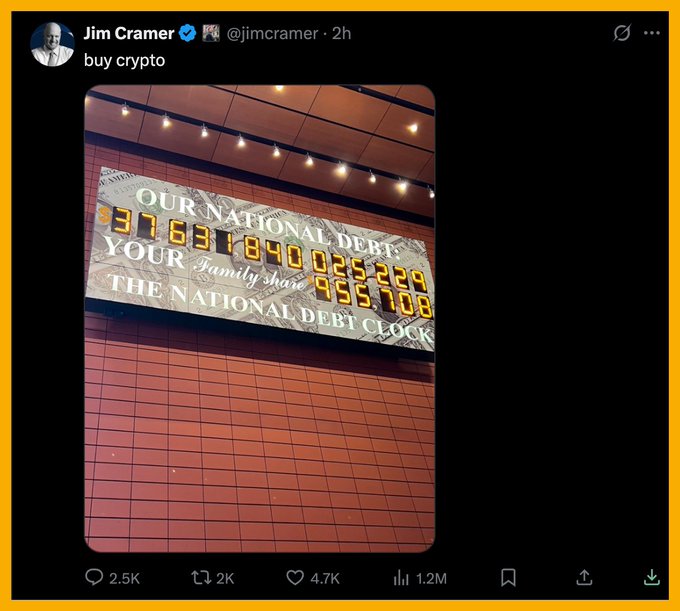
Jim Cramer, host of "Mad Money" and "Squawk Box," is one of the most influential figures on US financial television. He often shares short-term views on stocks and crypto, so he is not immune to mistakes, but in the long run, he maintains a positive outlook on Bitcoin. In a recent interview, Cramer argued that crypto should be viewed more as a form of "financial insurance" than a traditional valuation investment tool. He sees Bitcoin as an asset to hedge against the massive national debt risk of the US and as an expression of the younger generation's rebellion against the current financial system. According to him, as the government continues to issue bonds to cover budget deficits, the subsequent generation will have to bear that debt, and Bitcoin is a way for them to protect themselves against the devaluation of the USD. Cramer emphasized that continuous money printing and borrowing cause the value of the dollar to weaken gradually, similar to a person having to borrow to spend when their income is insufficient. Therefore, crypto, and Bitcoin specifically, with its decentralized nature and limited supply, become a rational safe haven. Although he occasionally offers short-term views that Bitcoin's price is "too high" or "too low," he has consistently shown long-term conviction in the value of this asset class over many years.
US Political and Regulatory Pressure on the Fed
In parallel, another major issue is dominating the US financial market: the Fed's monetary policy. Beth Hammack, President of the Cleveland Fed, stated that the agency faces a difficult situation: needing to curb high inflation while keeping the job market safe. She also noted that US inflation has been above the 2% target for over four years and may not return to the target level until late 2027 or early 2028. This view aligns with Fed Chair Jerome Powell: the Fed will continue to maintain high interest rates to curb inflation, even if it might weaken the job market.
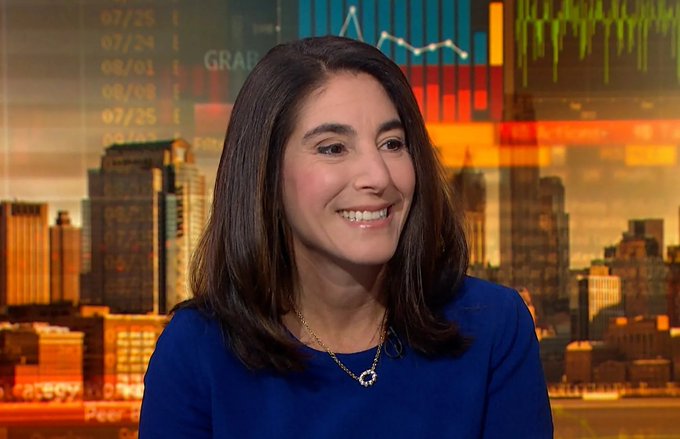
However, the big question remains: is the pursuit of the 2% target worth sacrificing economic growth? Both Powell and Mester admit there is no completely safe path: raising rates could cause a recession, while keeping them the same or cutting them could cause inflation to rise again. In this context, the scenario where the Fed chooses the "path of least resistance," which is to loosen policy and print more money, is becoming more likely, especially as the US enters a new political cycle. As Chairman Powell's term ends next year, many believe the next Fed Chair will be a strong advocate for interest rate cuts, aligning with the "stimulus to boost the economy" trend that Trump prioritizes. In that case, the USD is likely to continue losing value, and scarce assets like Bitcoin will emerge as a long-term store of value. Overall, both Jim Cramer's remarks and the Fed's actions reflect the same reality: the global financial system is dominated by public debt, inflation, and loose monetary policy. In this environment, Bitcoin is not just a speculative investment but is increasingly viewed as a "safe haven" against the erosion of fiat currency, and that is likely the message Jim Cramer wants to convey with the caption "Buy crypto."
The European Central Bank (ECB) decided to keep its deposit interest rate at 2%, after having already implemented 8 key rate cuts over the past 12 months. This decision reflects the delicate balancing act between supporting weak economic growth and managing persistent inflation risk.
The persistent inflation experienced by the public is often higher than official figures, most notably in commodity prices. This inflation, combined with expansionary money policies, continues to drive asset prices upward while incomes fail to keep pace, which is widening the wealth gap.
Updates on US Crypto Progress
Firstly, it is clear that the regulatory environment for the crypto market in the US is becoming more open and positive. The SEC recently met with institutions like VanEck to discuss crypto ETFs, asset tokenization, DeFi, and digital asset custody, indicating that the agency is becoming increasingly interested in and cooperative with the industry.
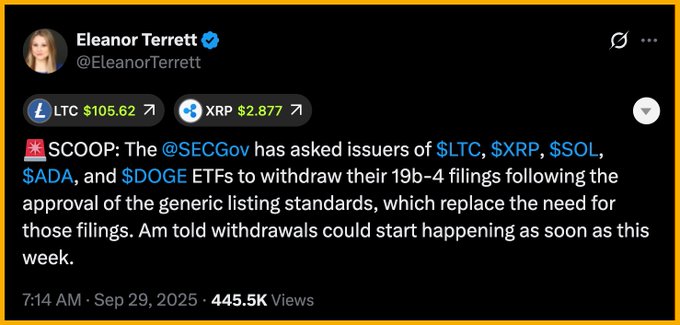
Concurrently, the SEC requested that issuers of ETFs for LTC, XRP, SOL, ADA, and DOGE withdraw their 19b-4 (ETF) filings because the newly approved unified listing standard renders these filings unnecessary. This means that these ETFs can now be issued through the general standard without individual SEC approval. This is very good news for crypto.
Commissioner Hester Peirce, often called "Crypto Mom," stated that the SEC is now more crypto-friendly and wants to accelerate the process of issuing clear regulations, while apologizing for the agency's previous hardline stance. She shared that she had previously been unable to convince the SEC's internal body to give crypto a fair chance.
Under new Chairman Paul Atkins (appointed during the Trump administration), the SEC has established a Crypto Task Force, withdrawn many lawsuits against crypto companies, and launched Project Crypto—a collaborative effort between the SEC and CFTC to update the legal framework for digital assets. This is a major turning point, marking a strong shift from the tough approach under former Chairman Gary Gensler.
Coinbase CEO Brian Armstrong recently provided an update on positive progress in the US crypto legal framework. He noted that the GENIUS Act on stablecoins has been passed, marking a significant milestone for the industry. The next step is the passage of the market structure bill, which is currently under Senate review after receiving strong bipartisan support in the House.
In addition, Citi Bank forecasts that the stablecoin market could reach $4 trillion by 2030, with a base scenario of $1.9 trillion—higher than the US Treasury Department's estimate. Citi believes that stablecoins will support rather than harm the banking system, especially when combined with tokenized deposits. The market size has already surpassed $287 billion after the GENIUS Act was passed, which created a clear legal framework. Treasury Secretary Scott Bessent noted that stablecoins will strengthen the global position of the USD, becoming part of the Trump administration's crypto strategy.
However, large banks are lobbying to restrict the ability of stablecoin holders to earn interest, even though this regulation was legalized in the act. Armstrong criticized this move as an attempt to protect the banks' record profits and disadvantage consumers. He also warned that siding with the banks would be a political mistake, as approximately 50 million Americans use crypto and want to legally earn interest on their digital assets. He urged the crypto community to act, advising them to visit standwithcrypto.org to contact their representatives, support the market structure bill, and protect the right to earn rewards from stablecoins.
Other Key Crypto & Market Updates
The MicroStrategy Fund just bought an additional 196 BTC for a total of approximately $22.1 million, at an average price of $113,048/BTC. To date, the company holds 640,031 BTC, equivalent to $71.8 billion at the current market price. The average purchase price for all of this Bitcoin is estimated to be around $73,983/BTC.
Shares of Bitcoin mining company Riot Platforms (RIOT) have been upgraded by both JPMorgan and Citigroup, reflecting expectations for new profit streams from AI and cloud computing services, amid declining traditional Bitcoin mining profits. JPMorgan upgraded the stock rating from neutral to overweight, with a 12-month price target of $19, up from the previous forecast of $15. Similarly, Citigroup also upgraded the rating from neutral to buy and adjusted the price target to $24, significantly higher than the previous $13.75.
SWIFT is collaborating with over 10 banks, including BNP Paribas and BNY Mellon, to test transmitting payment information directly on the blockchain through ConsenSys's Ethereum Layer-2 platform, Linea. This solution operates similarly to stablecoins, enabling faster, safer transactions while remaining compliant with legal regulations. The project aims to simplify interbank payment processes, reduce reliance on old infrastructure, and pave the way for blockchain integration into the global financial communication system.
A report by ApeX Protocol shows that Singapore and the UAE are the two countries most interested in crypto globally, based on ownership rates, user growth, search activity, and infrastructure. Singapore leads with 24.4% of the population owning crypto, while the UAE ranks second with 25.3%, but has a lower composite score. The US ranks third due to its strong infrastructure and the largest number of crypto ATMs, followed by Canada with fast user growth, and Turkey in fifth place, where inflation peaked at 83% in late 2022.
Following the Alpenglow upgrade, Solana is considering removing the block size limit, allowing each validator to process transactions based on its hardware capacity. Stronger validators can process more transactions, while weaker validators can skip overly large blocks to avoid slowing the network. This upgrade helps increase network speed, reducing block finality time from 12.8 seconds to 150 milliseconds, while supporting a skip-vote feature for weaker validators to maintain consensus. However, the risk is that rewards might favor wealthier, more powerful validators, leading to centralization and a potential risk of reduced security if blocks become too large.
SoftBank and Ark Invest may participate in Tether's $15–$20 billion funding round, which could value the company at up to $500 billion. If successful, Chairman Giancarlo Devasini could own $224 billion in assets, making him the 5th richest person in the world, surpassing Warren Buffett.
BlackRock's $17.1 billion Global Allocation Fund increased its investment in Bitcoin by 38% in Q2. As of July 31st, the fund held 1,000,808 IBIT shares worth $66.4 million, up from 723,332 shares at the end of April. This move marks a return to Bitcoin after a period of reduction earlier in the year.
The United Nations has applied the Hyperledger Indy blockchain to modernize its UNJSPF pension system, replacing a manual process that had existed for over 70 years. Since its deployment in 2021, the technology has helped verify digital identities faster and more transparently, reducing errors, fraud, and processing time. Research confirms that blockchain is the optimal solution for digital identity verification, and the UN is considering expanding this model system-wide, aiming to build a "public digital asset"—a secure, scalable, and inclusive digital infrastructure.
Cyber Hornet has filed for three combined S&P 500 stock and crypto ETFs, including: 75% S&P 500 + 25% XRP (XXX), 75% S&P 500 + 25% ETH (EEE), and 75% S&P 500 + 25% SOL (SSS). Concurrently, several other entities have also updated their Solana ETF filings with the SEC, suggesting that October–November could be a period of surging crypto ETF approvals.
Sources
- Bloomberg
- CoinDesk
- U.S. Treasury
- TradingView
- Reuters
- SEC
- White House Press Office
- CME FedWatch Tool
- Trueflation
- European Central Bank (ECB)
- Metaplanet Investor Relations
- ANAP Investor Relations
- H100 Group Investor Relations
- LIXTE Biotechnology Investor Relations
- Avalanche Foundation Official Announcements
- HKMA Official Announcements
Disclaimer
This article is for informational purposes only and should not be considered financial advice. Please do your own research before making investment decisions.

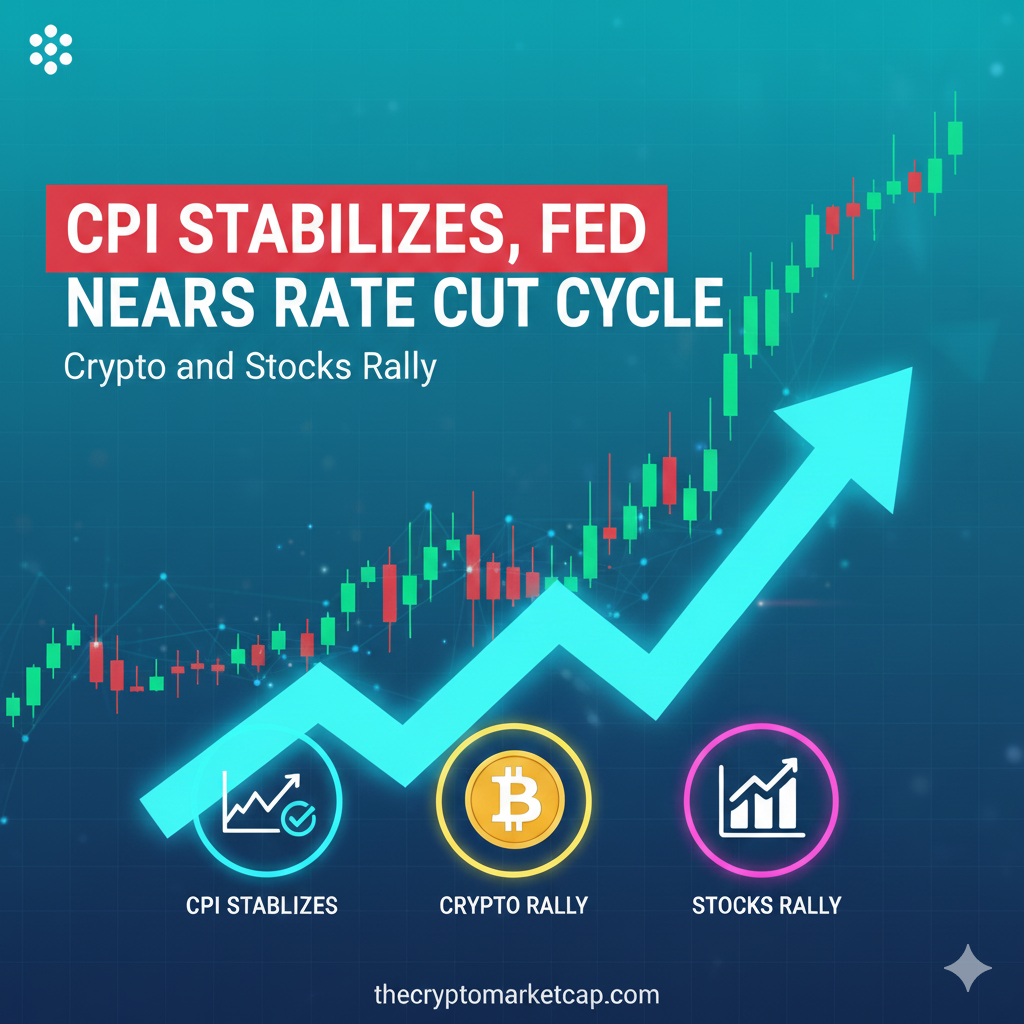
.png)



